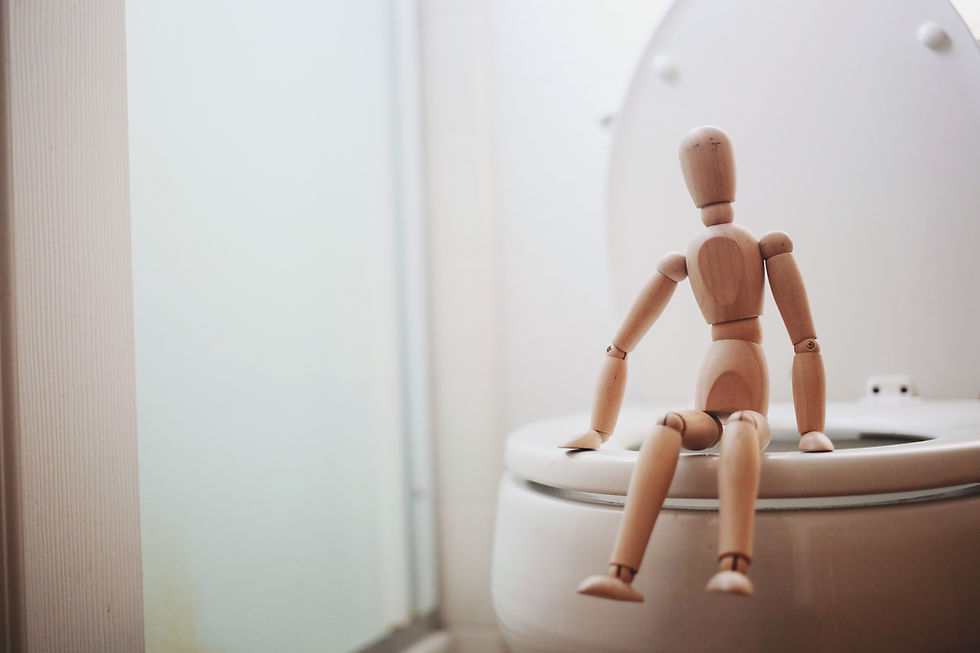What is Urinary Incontinence?
- The Osteopathic Pelvic Hub
- Sep 22, 2023
- 2 min read
Updated: Oct 11, 2023
Continence is our ability to control our bladder at all times, including coughing, sneezing, running, walking, sleeping and standing on our feet for long periods. Men, women and children can experience bladder control. Addressing the root cause of your incontinence is essential for the best management.
The most common types of bladder leakage are urinary stress incontinence and urinary urge incontinence.
Urinary Stress Incontinence often occurs when there is increased pressure placed on the pelvic floor such as a run, jump, sneeze or cough.
Possible causes include:
Weak pelvic floor muscles
Stretches or torn ligaments that support the bladder and urethra
Hormone changes such as low oestrogen prior to getting your period, at menopause, breastfeeding or long periods of absent periods.
High load from heavy exercise or weight
Poor breathing mechanics
Urinary urge incontinence often looks like rushing to the toilet, frequency, urgency, getting up often at night, leakage on the way to the toilet and bedwetting)
Possible causes include:
Overactive bladder muscle
Bladder irritants such as caffeine, cold weather, running water, constipation, stress, poor sleep
Hormone changes such as low oestrogen prior to getting your period, at menopause, breastfeeding or long periods of absent periods.
Weak pelvic floor muscles
Poor bladder habits such as going to the toilet ‘just in case’
How can we help?
Assessment of your pelvic floor muscles
Internal myofascial release to tight pelvic floor muscles
Treating the fascia (connective tissue) through the abdomen and lower limbs that attach onto the bladder
Improve the neuromuscular timing of the pelvic floor. Your pelvic floor muscles might need to be trained for high load activities such as exercise, running, jumping, coughing or sneezing.
Treating scar tissue contributing to bladder tension eg Caesarean section, abdominal and perineum scarring
Visceral treatment to the bladder, it’s attachments and surrounding structures within the pelvis
Bladder diary - This is a 3 day record of your bladder habits
Bladder retraining and deferral strategies
Addressing bladder triggers
Addressing lifestyle factors such as hydration and removing bladder irritants
Optimising bowel and bladder health
Improve breath and pelvic floor connection
Improve strength of the pelvic floor
Improve foot and hip strength


Comments